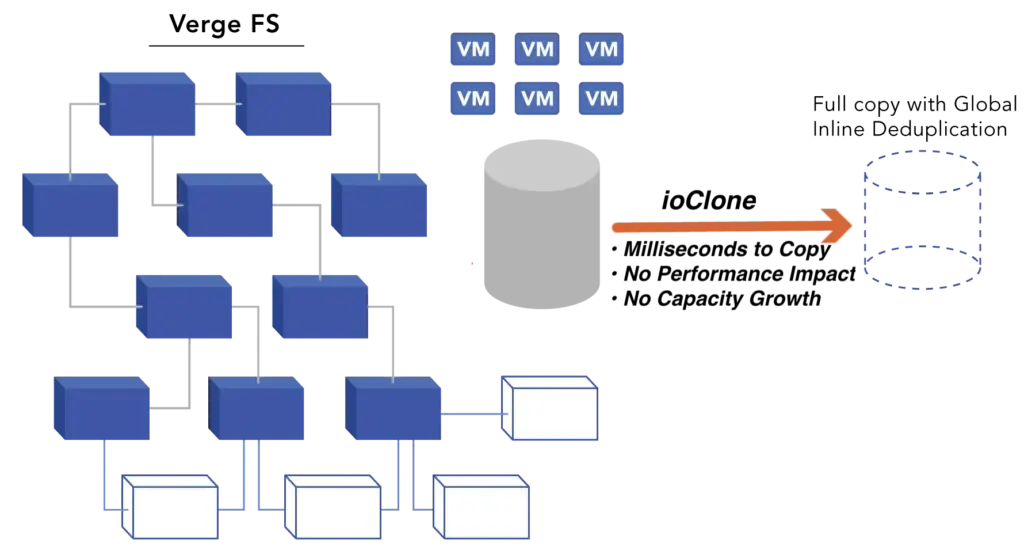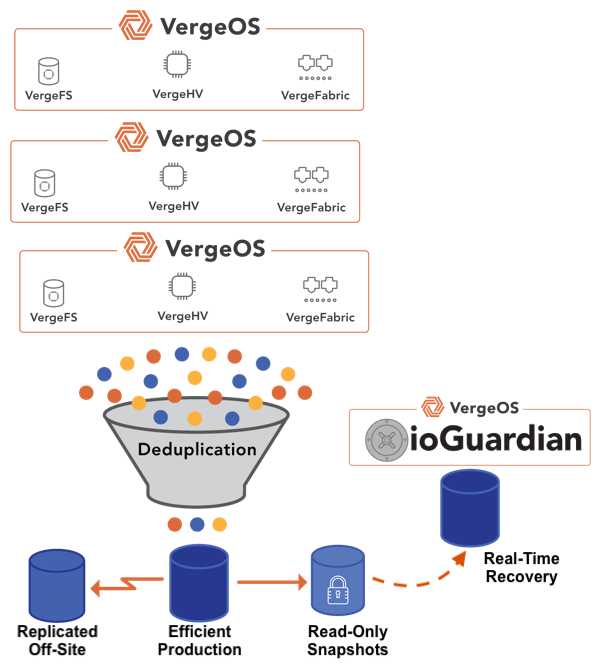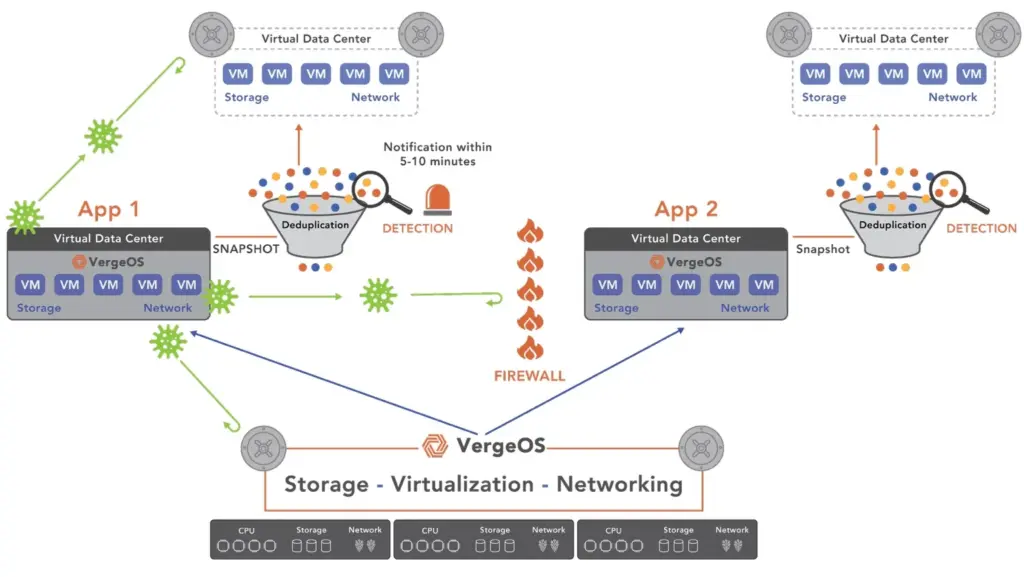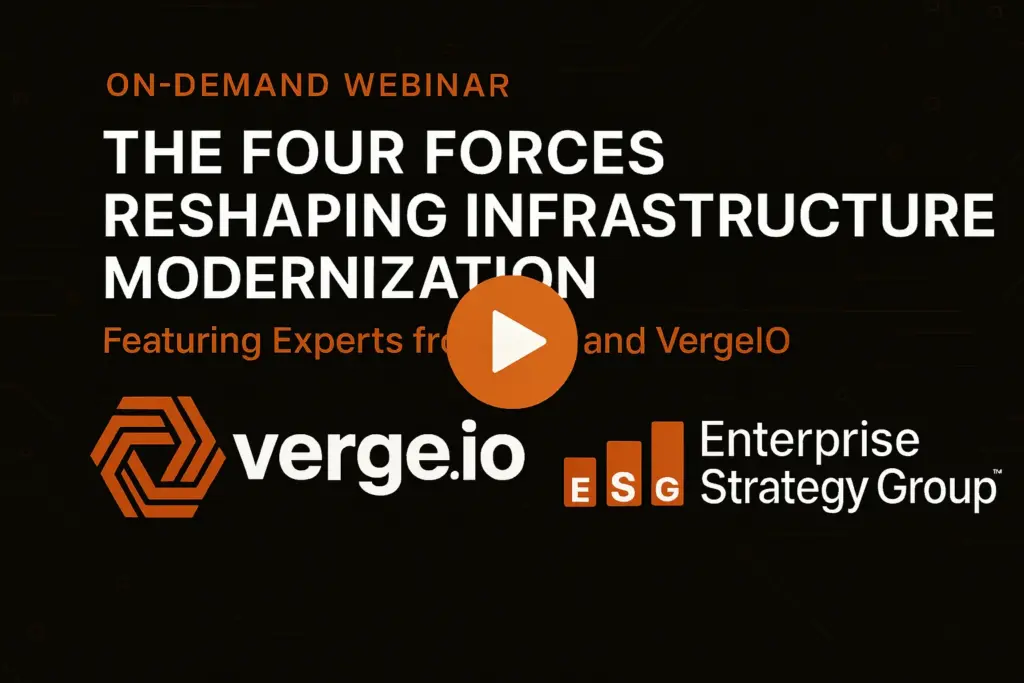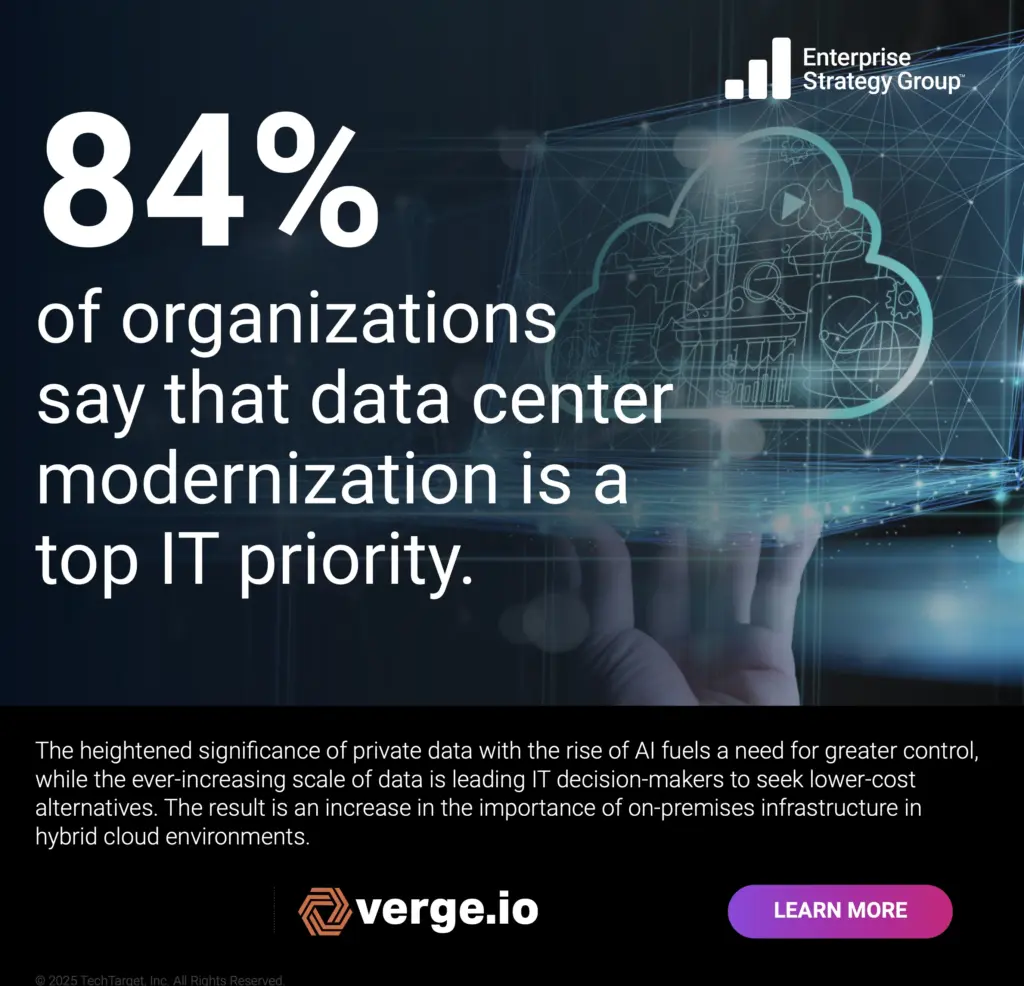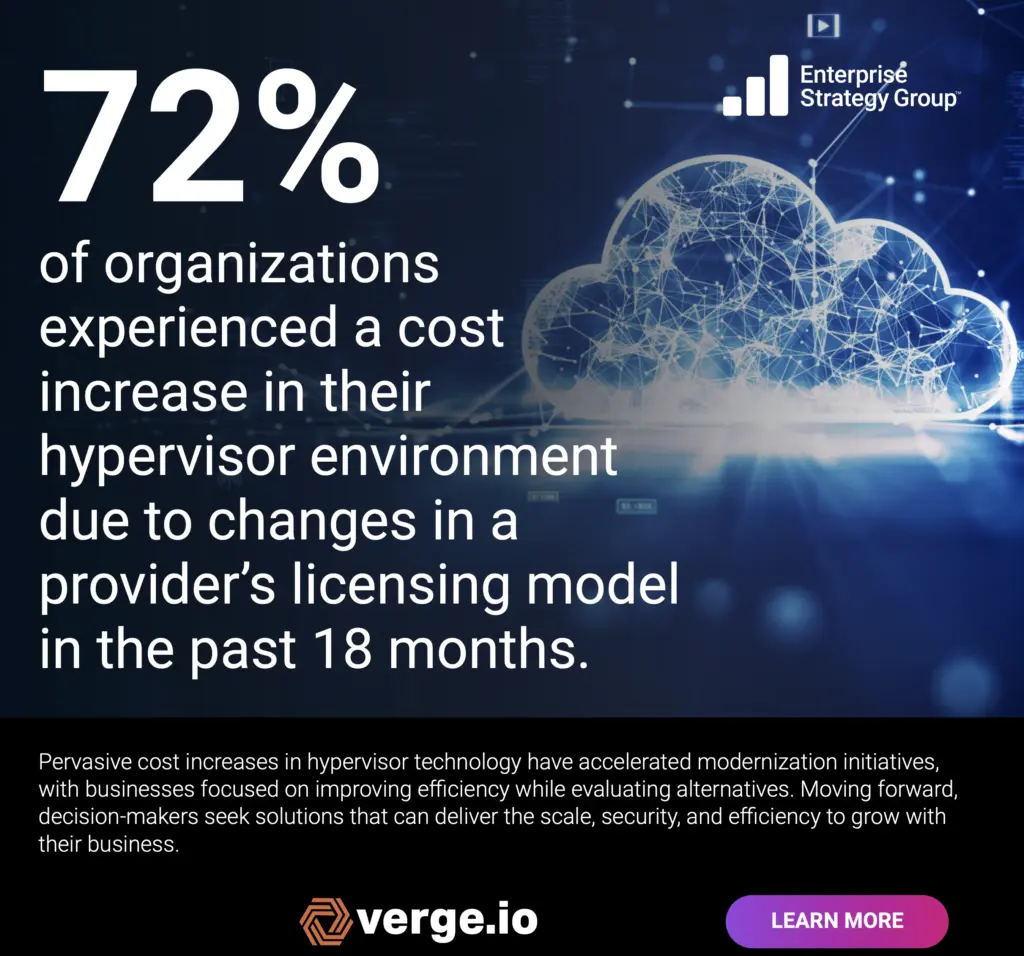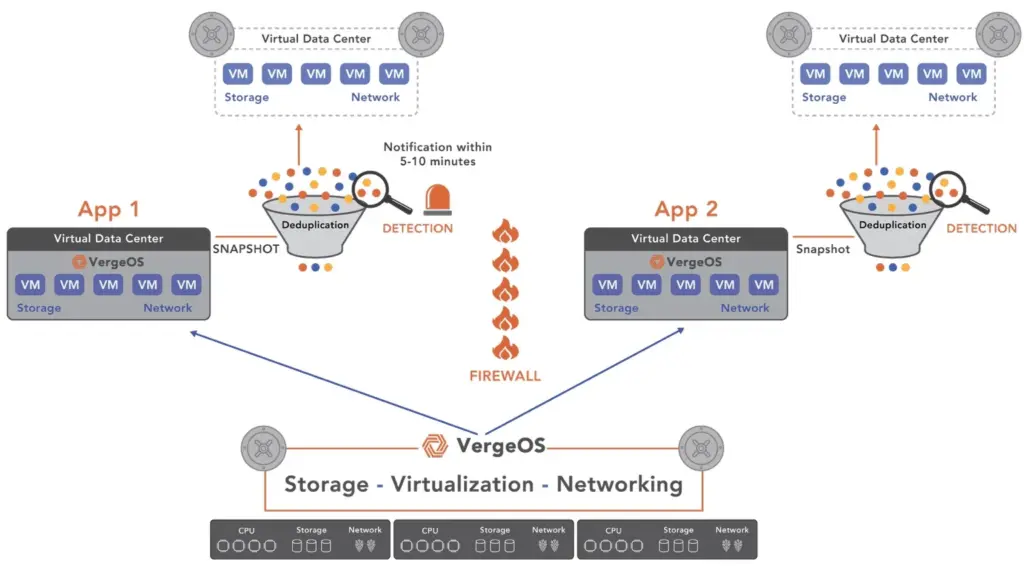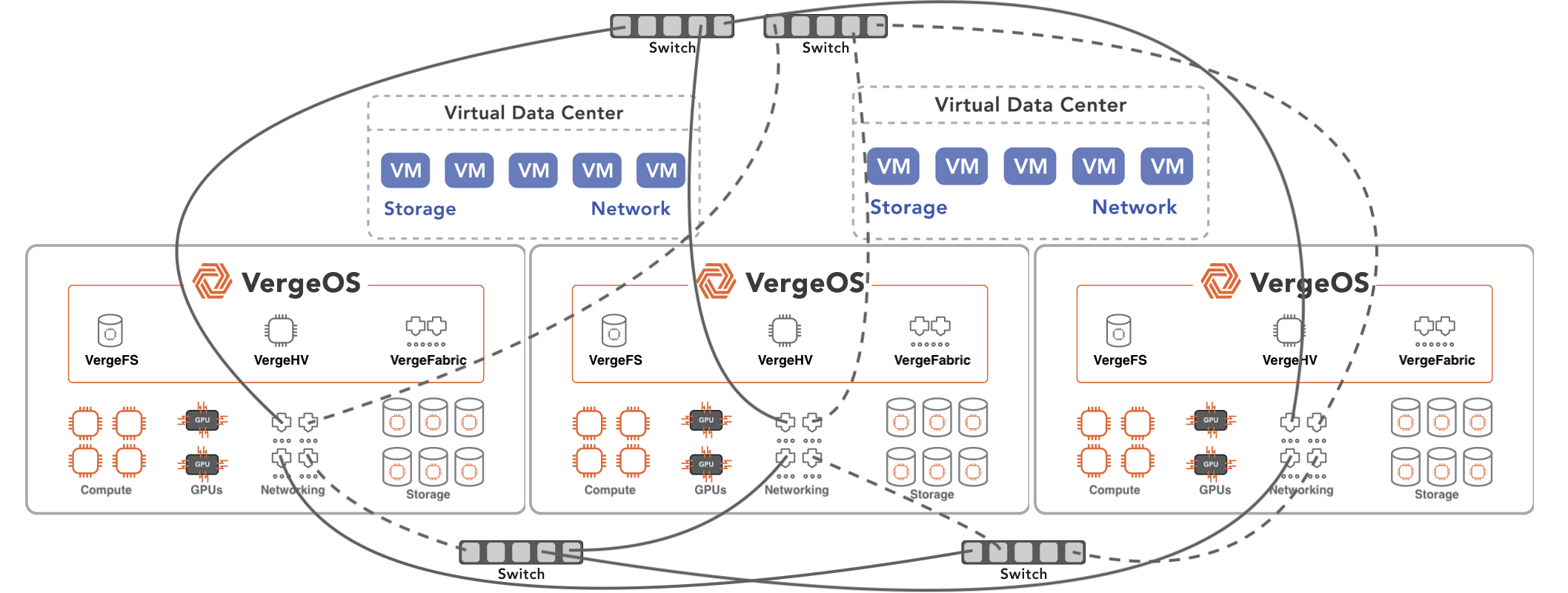The decision to leave VMware often stems from necessity, but it is also an opportune time to take a broader view and cut education infrastructure costs. However, it is not just K-12 that is under pressure; the entire public sector is feeling the burden of Broadcom’s acquisition of VMware. Licensing costs are rising, support terms are evolving, and legacy renewal paths are no longer aligned with operational realities. IT planners should view this as more than a hypervisor replacement task. It’s an opportunity to reduce overall infrastructure costs and eliminate long-standing inefficiencies across the entire stack.
The Challenge of Predictable Infrastructure Budgeting
School districts and municipalities operate in environments where budgets are fixed and procurement is slow. Yet their infrastructure is built on a layered model that multiplies complexity. Virtualization, storage, networking, backup, and disaster recovery are delivered by different vendors, each with its own licensing models and hardware dependencies.
This model made sense when departments had specialists and budgets could accommodate capital refresh cycles. Today, it’s a liability. Managing multiple systems means more support contracts, more staff overhead, and higher long-term costs.
VergeOS: One Platform, All Functions
The public sector’s IT infrastructure needs to be reliable and manageable without requiring a team of specialists to maintain it. VergeOS consolidates the entire stack—virtualization, storage, networking, backup, and DR—into one code base, a unified data center operating system. It installs directly on commodity x86 hardware and can run on both existing servers and new systems.

This consolidation reduces the number of systems to learn, maintain, and budget for. Instead of managing multiple vendors and renewal cycles, IT teams can focus on delivering services. VergeOS doesn’t replace one product—it replaces an entire category of legacy infrastructure.
“VergeIO is so good at handling things behind the scenes that we can focus on new solutions.”
— Tim Johnson, Senior Systems Administrator, Lancaster Central School District
Flat Licensing Means Predictable Infrastructure Budgeting
Budget predictability is critical for schools and municipalities that rely on public funding and multi-year planning cycles. Legacy vendors price by core, feature, or consumption, making it difficult to forecast costs and avoid surprise overages.
VergeOS employs a flat, per-server licensing model that includes all features. There are no add-ons, capacity gates, or audit traps. This structure enables precise long-term planning and avoids the cost escalations that follow infrastructure growth or vendor consolidation events.
“Lancaster CSD cut $150,000/year in licensing and maintenance costs.”— Lancaster Central School District
Storage Efficiency for Predictable Infrastructure Budgeting
Production performance is a non-negotiable requirement for public sector IT. Applications such as student information systems, GIS tools, payroll systems, and financial databases must remain responsive even as infrastructure budgets are tightened. Traditional storage systems force a tradeoff between performance and efficiency. Deduplication features are licensed separately, offloaded to backup tiers, or implemented in ways that degrade real-time I/O performance. vSAN environments, in particular, struggle under snapshot load and high-concurrency access.
VergeFS, the file system built into VergeOS, is designed for production performance. It performs inline global deduplication across all volumes and snapshots without throttling throughput or introducing latency. Deduplication occurs in real-time, and because it integrates into VergeOS—not as a background task or secondary service—it improves cache efficiency and network performance.
“We utilize global dedupe and compression—VergeOS VSAN is giving us a 16:1 ratio. SolidFire iSCSI was 3.7:1.”
— James Marsack, RESA
Predictable Infrastructure Budgeting Requires Integrated Data Protection
IT can also cut education infrastructure costs by eliminating the need for separate backup hardware and software. In VergeOS, snapshots are fully independent, deduplicated, and performance-neutral. They can be used aggressively for protection and rollback without affecting user experience or workload performance. For districts and municipalities, this means increased protection, reduced hardware requirements, and lower risk, without compromising speed.
Lancaster Central School District experienced this first-hand when moving from a VMware vSAN environment to VergeOS. They had previously avoided using snapshots because of performance degradation.
“We can take snapshots of VMs without worrying about performance hits. That alone is a huge win.”
— Tim Johnson, Senior Systems Administrator, Lancaster CSD
Embedded Data Availability and DR Enables Predictable Infrastructure Budgeting
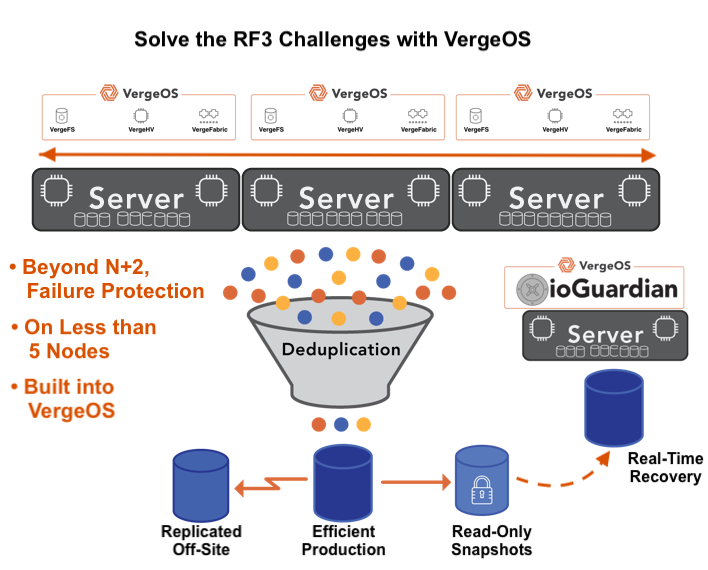
Backup infrastructure has evolved into one of the most expensive components of the IT stack. It’s common for districts to pay nearly as much for backup software and hardware as they do for their hypervisor layer. Recovery is slow, operations are manual, and storage costs constrain retention policies.
VergeOS eliminates the need for a separate backup infrastructure. Snapshots are built in and handled by ioClone. Recovery is managed by ioGuardian, which delivers missing data inline during failures, eliminating the need for restore jobs or downtime. This architecture provides fast recovery and strong resiliency without requiring backup servers, appliances, or job management.
“ioGuardian was seamless. If it weren’t for the alerting system, we wouldn’t even have known there was a failure.”
— James Marsack, St. Clair County RESA
Predictable Infrastructure Budgeting Requires Long-Term Sustainability
The public sector’s IT infrastructure doesn’t just need to survive the current budget cycle—it needs to be sustainable and scalable. IT can cut education infrastructure costs by slowing the rate of server refresh cycles, minimizing software bloat, and lowering the total number of platforms IT teams must support.
VergeOS supports heterogeneous clusters, so older hardware can remain useful and coexist with new servers. Its unified architecture removes the need for dedicated backup or DR tools. With a consistent interface and a single software base, VergeOS reduces the learning curve and support overhead that drains time and staffing resources.
“We extended the life of our existing hardware while reducing licensing costs.”
— Brian Bazzell, IT Director, City of Saint Peters
Preparing for an AI Future
As AI continues to evolve, public sector organizations are under pressure to support new initiatives—from AI literacy in K–12 classrooms to virtual assistants that improve citizen services. However, legacy infrastructure is not designed to support the data access patterns, GPU dependencies, or orchestration complexity required by AI workloads. For IT teams already stretched thin, layering AI frameworks on top of traditional infrastructure increases cost and complexity.
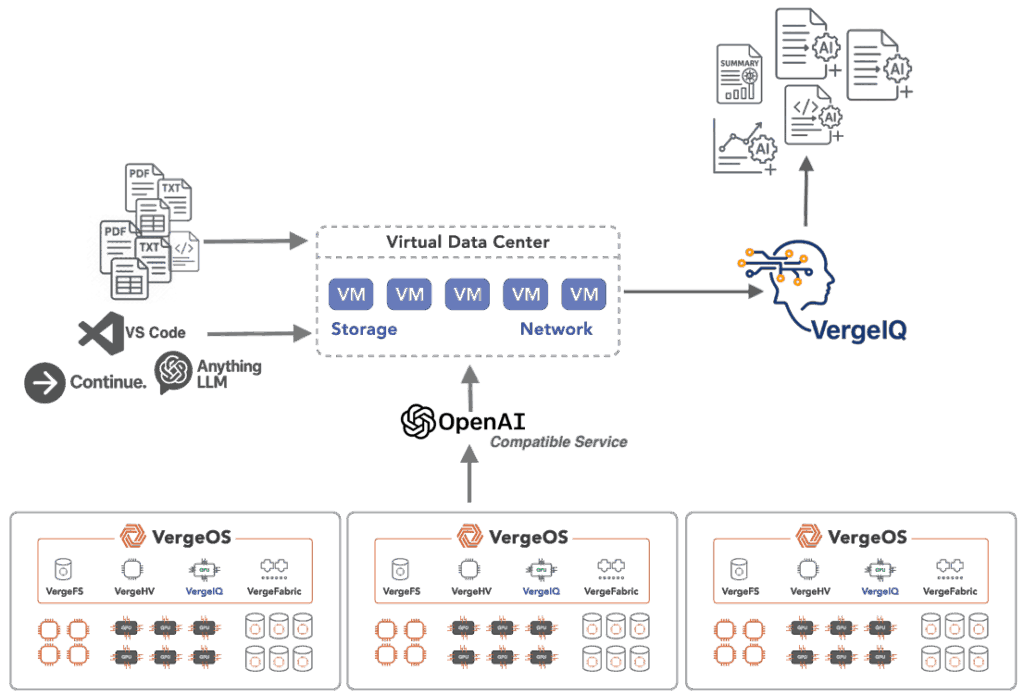
VergeOS was built to support modern workloads alongside traditional applications. With VergeIQ, VergeOS introduces an integrated AI services layer that enables school districts and municipalities to experiment with AI without requiring a separate infrastructure stack. VergeIQ supports retrieval-augmented generation (RAG), inference pipelines, virtual agents, and model serving directly within the VergeOS platform. There is no need for Kubernetes or external orchestration tools—customers use the same management interface and infrastructure they use today.
GPU pass-through and pooling are supported natively, enabling AI workloads to run securely and efficiently without sacrificing visibility or manageability. Whether you’re building an internal chatbot for staff support or training students on localized language models, VergeIQ makes it possible to begin deploying AI with minimal friction.
St. Clair County RESA is planning to train AI-powered support agents on their documentation to assist district users. VergeOS positions public sector IT teams not just to handle today’s challenges but to support tomorrow’s opportunities without another round of tools, training, or vendors.
The VergeIO View
Leaving VMware is a necessary step, but it’s not the whole solution. The opportunity is bigger: reduce costs, simplify infrastructure, and build an environment that public sector IT can afford to manage, year after year, upgrade after upgrade. VergeOS solves the infrastructure modernization problem by offering a practical, technically sound path forward—and it does so with fewer moving parts.
Next Steps
- Request a technical demo of VergeOS.
- Schedule a whiteboard architecture session with a VergeIO architect
- Explore case studies from other public sector deployments.
- Read our white paper “How K–12 School Districts and Municipalities Use VergeOS to Solve IT Challenges.”

